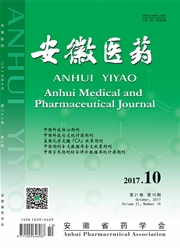

 中文摘要:
中文摘要:
目的 观察桥粒芯糖蛋白2(DSG2)点突变(DSG2F536C)基因敲入小鼠心脏结构、功能、病理学改变,并初步探讨其纤维化的发生机制。方法 构建DSG2F536C突变基因敲入小鼠模型,分为纯合子突变组(DSG2mt/mt)、杂合子突变组(DSG2mt/wt)和野生型组(DSG2wt/wt)。分别行超声心动图检查小鼠心脏结构和功能,Masson三色染色和HE染色观察心肌组织病理特点,并用Western blot法测定心肌组织转化生长因子-β1(TGF-β1)的蛋白表达。结果 与DSG2wt/wt组小鼠相比,DSG2mt/wt组小鼠左室射血分数和缩短分数显著降低,DSG2mt/mt组小鼠则较DSG2mt/wt组进一步降低,并伴有室壁明显变薄和心腔显著扩大。DSG2mt/mt组小鼠的右心室出现心肌排列紊乱、纤维化和炎性反应,约1/3的小鼠同时累及左心室,而DSG2mt/wt组小鼠仅见心肌排列紊乱。与DSG2wt/wt组小鼠相比,DSG2mt/wt组和DSG2mt/mt组小鼠心肌组织TGF-β1蛋白表达明显升高。结论 DSG2F536C小鼠表现出心室扩大、室壁变薄、心功能下降、炎性反应和心室纤维化浸润和TGF-β1升高等表征,类似于临床致心律失常性右室心肌病(ARVC)患者的表型,提示其为致病性突变。此外,DSG2F536C基因敲入小鼠为深入研究DSG2突变导致ARVC的发病机制提供了良好的动物模型。
 英文摘要:
英文摘要:
Objective To investigate the structural, functional and pathological characteristics of DSG2F536C mutation knock-in mice heart and the preliminary pathogenesis of cardiac fibrosis. Methods DSG2F536C mutation knock-in mice were generated and assigned to three groups, i. e. homozygous mice group ( DSG2mt/mt) , heterozygous mice group ( DSG2mt/wt) and wild type mice group (DSG2wt/wt) . Structural and functional changes of mice heart were evaluated by echocardiography. Pathological characteristics of the myocardium were assessed by Masson's trichrome staining and HE staining. Expression level of Transforming growth factor (TGF- ) was measured by Western blot. All studies were performed in mice at ten weeks of age. Results Compared with DSG2wt/wt mice, DSG2mt/wt ones hadsignificantly decreased left ventricular ejection fraction (LVEF) and fractional shortening ( LVFS) , while DSG2mt/mt mice showed further dramatically decrease in LVEF and LVFS. Meanwhile, left ventricular diameter and volume were sig-nificantly increased, but left ventricular wall thickness was significantly decreased in both DSG2mt/wt and DSG2mt/mt mice. Moreover, DSG2mt/mt mice were observed to have disordered cardiac muscle, fibrosis and inflammatory cell infiltrates of cardiac myocytes in the right ventricle, and left ventricle was affected in 1/3 of them. DSG2mt/wt mice were noted to have disordered cardiac muscle only. Compared with DSG2wt/wt mice,both DSG2mt/wt and DSG2mt/mt ones showedsignificantly increased expression of cardiac TGF-β1 Con-clusions DSG2F536Cknock-in mice show phenotype similar to those of ARVC patients, including enlarged ventricles, thinned ven-tricular wall, decreased heart function, inflammatory response, ventricular fibrotic infiltration and increased TGF-β1 , which indicate that the mutation might be a pathogenic cause of ARVC. In addition, DSG2F536C knock-in mice could be a useful model for the study of the pathogenesis of ARVC.
 同期刊论文项目
同期刊论文项目
 同项目期刊论文
同项目期刊论文
 期刊信息
期刊信息
